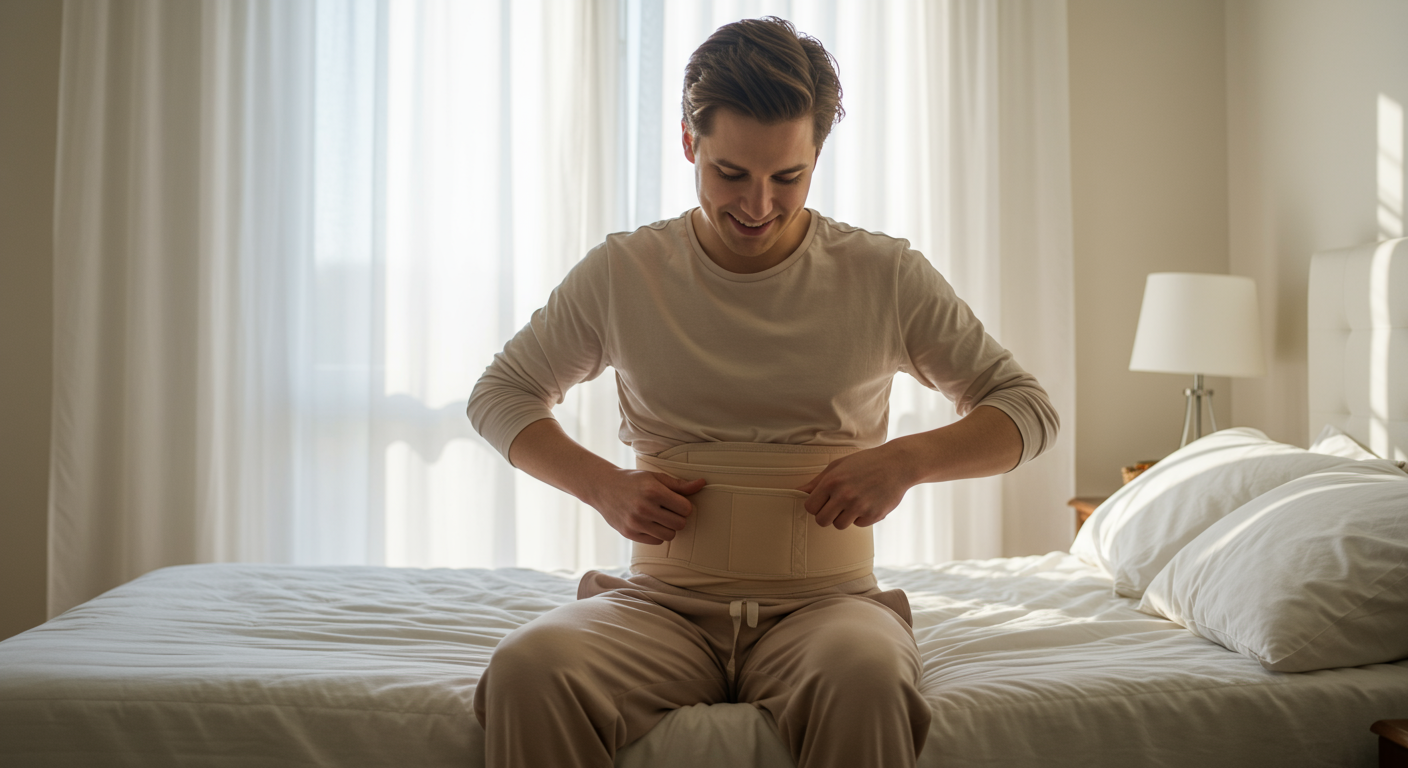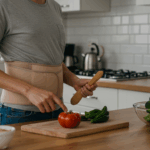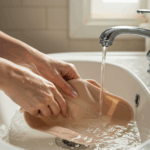The Science of Support: Understanding Abdominal Binder Materials and Construction
The effectiveness of an abdominal binder depends significantly on its materials and construction. Understanding these elements helps you make an informed choice for your specific needs and ensures optimal comfort during recovery.
Core Materials: The Foundation of Support

Elastic Materials
Medical-Grade Elastic
- Provides consistent compression
- Maintains shape after repeated use
- Typically latex-free for sensitive skin
- Offers 2-way or 4-way stretch
Power Net Elastic
- Stronger compression capability
- Excellent recovery properties
- Breathable mesh structure
- Ideal for post-surgical support
Cotton Blends
Benefits:
- Natural breathability
- Soft against sensitive skin
- Absorbs moisture effectively
- Reduces risk of skin irritation
Considerations:
- May lose shape faster
- Requires more frequent washing
- Less compression than synthetic materials
Neoprene
Advantages:
- Provides warmth and compression
- Water-resistant properties
- Durable and long-lasting
- Maintains consistent pressure
Drawbacks:
- Can trap heat and moisture
- May cause sweating
- Not suitable for all skin types
- Requires careful cleaning
Advanced Fabric Technologies
Moisture-Wicking Fabrics
- Polyester microfiber blends
- Pulls sweat away from skin
- Quick-drying properties
- Reduces bacterial growth
- Ideal for active wearers
Antimicrobial Treatments
- Silver-ion technology
- Prevents odor formation
- Reduces infection risk
- Extends wear time between washes
- Important for post-surgical use
Compression Gradients
- Variable compression zones
- Targeted support areas
- Improved circulation benefits
- Enhanced comfort during extended wear
Construction Features That Matter
Closure Systems
Hook and Loop (Velcro)
- Pros: Easy adjustment, secure hold
- Cons: Can wear out, may catch on clothing
Zipper Closures
- Pros: Smooth profile, consistent compression
- Cons: Less adjustable, can be difficult to manage alone
Lace-Up Systems
- Pros: Highly adjustable, even pressure distribution
- Cons: Time-consuming, requires assistance
Pulley Systems
- Pros: Mechanical advantage for tightening
- Cons: More complex, higher cost
Panel Design
Single Panel
- Simple design
- Uniform compression
- Easy to apply
- Best for minor support needs
Multi-Panel Construction
- Targeted compression zones
- Better conformity to body shape
- Reduced rolling and bunching
- Superior for post-surgical support
Overlapping Panels
- Maximum adjustability
- Accommodates swelling changes
- Custom compression levels
- Professional-grade support
Specialized Features

Stays and Boning
- Flexible plastic stays
- Prevents rolling and bunching
- Maintains binder shape
- Provides additional back support
- Removable for washing
Breathable Panels
- Mesh ventilation zones
- Perforated materials
- Strategic placement for airflow
- Reduces heat buildup
- Essential for extended wear
Seamless Construction
- Reduces pressure points
- Minimizes skin irritation
- Smoother profile under clothing
- Enhanced comfort
- Premium option
Material Selection by Use Case
Post-Surgical Recovery
- Medical-grade elastic
- Antimicrobial properties
- Adjustable compression
- Breathable construction
- Latex-free options
Hernia Management
- Firm compression materials
- Targeted pad placement
- Durable construction
- Long-term wear capability
- Washable materials
Back Support
- Combination materials
- Rigid stays or supports
- Lumbar targeting
- Moisture management
- Extended wear comfort
Postpartum Use
- Soft, stretchy materials
- Gradual compression
- Skin-friendly fabrics
- Easy nursing access
- Hormone-safe materials
Quality Indicators
What to Look For:
- Reinforced stitching at stress points
- Covered or finished edges
- Colorfast materials
- Consistent stretch recovery
- Smooth, snag-free surfaces
- Clear care instructions
- Medical device certification
Red Flags to Avoid:
- Visible glue or adhesive
- Rough or unfinished edges
- Strong chemical odors
- Excessive pilling after minimal use
- Inconsistent compression
- Poor closure security
- No manufacturer information
Care and Maintenance by Material
Elastic and Synthetic Blends
- Machine wash cold, gentle cycle
- Air dry or low heat
- Avoid fabric softeners
- No ironing
- Replace when stretch is lost
Cotton and Natural Fibers
- Warm water washing acceptable
- May shrink slightly
- Can use gentle detergent
- Line dry preferred
- Iron on low if needed
Neoprene and Specialty Materials
- Hand wash recommended
- Mild soap only
- Thorough rinsing essential
- Air dry completely
- Store flat or rolled
Environmental Considerations
Sustainable Options
- Recycled polyester blends
- Organic cotton components
- Biodegradable packaging
- Ethical manufacturing
- Durability for extended use
Making Your Material Choice
Consider These Factors:
- Length of expected use
- Skin sensitivity issues
- Activity level during recovery
- Climate and season
- Washing frequency needs
- Budget constraints
- Doctor recommendations
Innovation in Materials
Emerging Technologies:
- Smart fabrics with compression sensors
- Temperature-regulating materials
- Self-cleaning nanotechnology
- Biodegradable medical textiles
- 3D-knitted custom fits
The right material choice can make the difference between a comfortable recovery and a challenging one. Invest in quality materials appropriate for your specific needs, and don’t hesitate to try different options if your first choice isn’t ideal. Your comfort and healing are worth the effort to find the perfect match.


